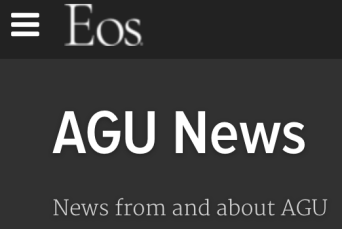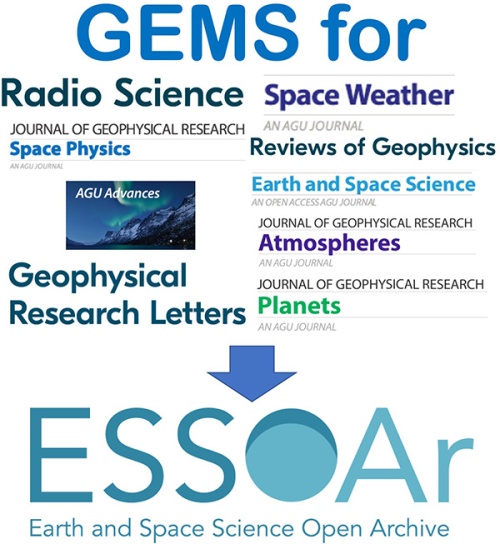I mentioned this in a side comment in an earlier post this month and since then I have been waiting for an official announcement from AGU making this public knowledge, which I have not seen yet. As my time as EiC is about to end, I’m using my penultimate post to let you know what the editors know: AGU will shift away from issue-based pagination to eLocators for all of its journals, starting in January 2020. If I see an announcement from AGU HQ about this (probably in an Eos article, maybe as AGU news or a From the Prow or Editors’ Vox post), I’ll include the link in the comments below.

While I am old-fashioned enough to like issue-based page numbers, I think that this is a really good move. The biggest reason for me: you will know your exact reference listing the moment that the paper is accepted, because the eLocator is based on the GEMS manuscript number, just like the eventual DOI.
We were told that the exact format of the eLocator will be this: a lowercase “e” followed by the last 5 digits of the manuscript number. So, for my grad student’s recent paper, the manuscript number of 2019JA026636 becomes an eLocator of “e26636” and a digital object identifier of https://doi.org/10.1029/2019JA026636. The only confusion is that most AGU journals have 6 digits after the two-letter journal designation, so you will have to drop the leading zero (or one, as GRL is about to roll over into that sixth digit). There is also the yearly rollover, if your paper is accepted in November or December that the publication year could be the following year, but there is no way around that. Overall, though, I think it will mean less citation errors because this eLocator is much simpler than a seemingly arbitrarily assigned page number range.
Like I said, I think that this is a good thing. It definitely means less work for Wiley, so issues will most likely appear online earlier in the month. Right now, an issue of JGR Space Physics usually appears in the third week of the month, sometimes even the fourth (for example, the November 2019 issue of JGR Space Physics was posted on December 26). We have relatively large issues (50-70 papers a month), and the issue-based pagination took time to do and then double check. No more! While there will still be pagination within the PDF version of each paper, it starts at one for every article, so it doesn’t matter if the final published version of a paper has ten or eleven pages, this uncertainty will not influence the pagination for the rest of the papers in the same issue. That November 2019 issue, by the way, goes from pages 8173 to 9754, over 1500 pages that the production staff had to make sure was properly formatted and paginated from beginning to end before it was released. JGR Space Physics will once again go over 10,000 pages (and probably over 700 papers).
I really hope that this change leads to issues being officially released earlier in the month, and also to better citation accuracy for papers in AGU journals. I am looking forward to it. I hope that you like it too.




